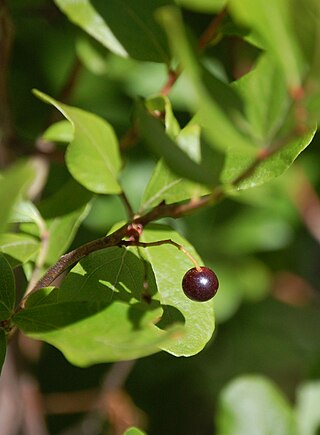Top Qs
Timeline
Chat
Perspective
Gaylussacia baccata
Berry and plant From Wikipedia, the free encyclopedia
Remove ads
Gaylussacia baccata, the black huckleberry, is a common huckleberry found throughout a wide area of eastern North America.
Remove ads
Description
Gaylussacia baccata is a shrub up to 150 cm (5 feet) tall, forming extensive colonies. Flowers are in dangling groups of 3–7, orange or red, bell-shaped. The berries are dark blue, almost black, rarely white.[2]
Similar species
The plant closely resembles the native blueberry plants (Vaccinium species) with which it grows in the same habitats. It can be readily identified by the numerous resin dots on the undersides of the leaves which glitter when held up to the light.
Remove ads
Distribution
The plant is native to Eastern Canada and the Great Lakes region, the Midwestern and Northeastern United States, and the Appalachian Mountains, the Ohio/Mississippi/Tennessee Valley, and Southeastern United States. The range extends from Newfoundland west to Manitoba and Minnesota, south as far as Arkansas, Alabama, and Georgia.[3]
Ecology
The shrub is considered fire-resistant due to surviving rhizomes quickly sending out new shoots following fires.[4]
It is a larval host to the brown elfin, Gordian sphinx, Henry's elfin, and huckleberry sphinx.[5]
Uses
The berries are sweet and tasty. People eat them raw, jellied, or baked into pancakes, muffins, and many other items.[6]: 39
See also
- Vaccinium membranaceum — with "black huckleberry" as common name also.
References
External links
Wikiwand - on
Seamless Wikipedia browsing. On steroids.
Remove ads

